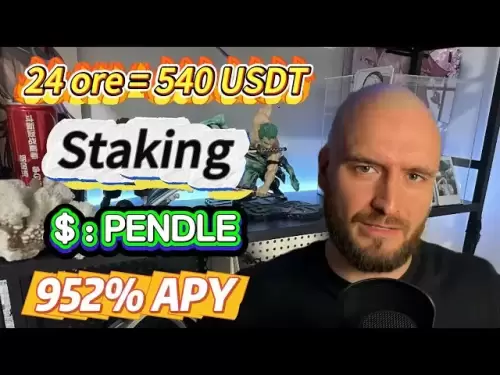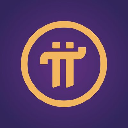-
 Bitcoin
Bitcoin $107,341.7259
0.15% -
 Ethereum
Ethereum $2,438.6204
0.70% -
 Tether USDt
Tether USDt $1.0003
-0.02% -
 XRP
XRP $2.1866
1.94% -
 BNB
BNB $649.0952
0.36% -
 Solana
Solana $150.9602
5.63% -
 USDC
USDC $0.9999
0.00% -
 TRON
TRON $0.2742
0.40% -
 Dogecoin
Dogecoin $0.1645
1.93% -
 Cardano
Cardano $0.5669
1.18% -
 Hyperliquid
Hyperliquid $37.8286
4.19% -
 Bitcoin Cash
Bitcoin Cash $491.4669
-2.74% -
 Sui
Sui $2.8150
3.06% -
 Chainlink
Chainlink $13.4184
2.91% -
 UNUS SED LEO
UNUS SED LEO $9.0809
0.27% -
 Avalanche
Avalanche $18.0295
2.60% -
 Stellar
Stellar $0.2396
1.19% -
 Toncoin
Toncoin $2.8587
0.13% -
 Shiba Inu
Shiba Inu $0.0...01160
2.59% -
 Litecoin
Litecoin $86.4192
1.45% -
 Hedera
Hedera $0.1486
1.19% -
 Monero
Monero $308.4324
0.87% -
 Polkadot
Polkadot $3.4202
1.43% -
 Bitget Token
Bitget Token $4.6436
-0.34% -
 Dai
Dai $0.9998
-0.02% -
 Ethena USDe
Ethena USDe $1.0002
0.00% -
 Uniswap
Uniswap $7.1527
3.29% -
 Pi
Pi $0.5357
-8.45% -
 Pepe
Pepe $0.0...09588
4.61% -
 Aave
Aave $259.9759
0.81%
How does MetaMask wallet switch between mainnet and testnet?
Switching between mainnet and testnet in MetaMask is essential for testing apps safely and transacting with real cryptocurrencies on the mainnet.
Apr 02, 2025 at 03:36 pm
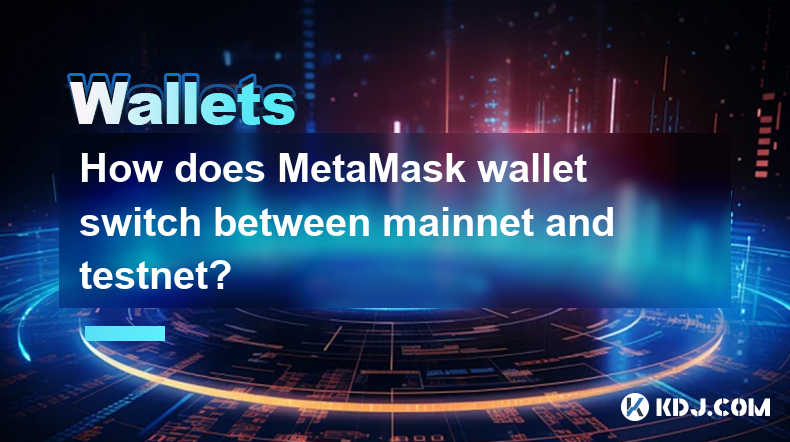
Switching between mainnet and testnet in MetaMask wallet is a crucial skill for users engaging with different blockchain environments. This article will guide you through the process step-by-step, ensuring you understand how to navigate these networks effectively. Whether you're testing new applications on a testnet or transacting on the mainnet, knowing how to switch between these networks is essential for a seamless experience in the crypto world.
Understanding Mainnet and Testnet
Before diving into the switching process, it's important to understand what mainnet and testnet represent. Mainnet is the primary network where actual transactions occur, involving real cryptocurrencies. On the other hand, testnet is a testing environment where developers can experiment without risking real assets. Testnets use test cryptocurrencies that have no real-world value, allowing for safe experimentation and development.
Preparing to Switch Networks
To switch between mainnet and testnet in MetaMask, you need to ensure your wallet is set up correctly. First, make sure you have the latest version of MetaMask installed. You can check for updates within the MetaMask extension or app. Next, log into your MetaMask wallet. If you're using the browser extension, click on the MetaMask icon in your browser. If you're using the mobile app, open the app and enter your password or use biometric authentication.
Switching to Testnet
To switch to a testnet, follow these steps:
- Open your MetaMask wallet.
- Click on the network dropdown menu at the top of the wallet interface. It typically shows "Ethereum Mainnet" by default.
- From the dropdown, select the testnet you wish to switch to. Common testnets include Ropsten, Rinkeby, Goerli, and Kovan.
- Once you select a testnet, MetaMask will automatically switch to that network. You'll see the network name change at the top of your wallet interface.
Switching Back to Mainnet
Switching back to the mainnet is just as straightforward. Here's how you do it:
- Open your MetaMask wallet.
- Click on the network dropdown menu at the top of the wallet interface.
- From the dropdown, select "Ethereum Mainnet."
- MetaMask will automatically switch back to the mainnet, and you'll see the network name change at the top of your wallet interface.
Adding Custom Testnets
Sometimes, you might need to add a custom testnet to your MetaMask wallet. This is common when working with newer blockchain projects that have their own test environments. To add a custom testnet, follow these steps:
- Open your MetaMask wallet.
- Click on the network dropdown menu at the top of the wallet interface.
- Scroll down and click on "Custom RPC."
- In the new window, enter the details of the custom testnet, including the Network Name, New RPC URL, Chain ID, and Symbol. You can usually find these details on the project's official documentation or website.
- Click "Save" to add the custom testnet to your MetaMask wallet.
Troubleshooting Common Issues
Switching between networks can sometimes lead to issues. Here are some common problems and their solutions:
- Network Not Showing Up: If a testnet doesn't appear in your dropdown menu, ensure you've added it correctly. Double-check the details you entered for custom testnets.
- Slow Network Switching: If switching between networks seems slow, try refreshing the page or restarting the MetaMask app.
- Connection Errors: If you encounter connection errors, check your internet connection and try again. Sometimes, the testnet servers might be down, so you may need to wait and try later.
Importance of Network Switching
Understanding how to switch between mainnet and testnet is crucial for several reasons. Firstly, it allows developers to test their applications in a safe environment before deploying them on the mainnet. Secondly, it enables users to participate in testnet events and earn test cryptocurrencies, which can be useful for learning and experimentation. Lastly, it helps in troubleshooting and understanding the behavior of different blockchain networks.
Best Practices for Network Switching
To ensure a smooth experience when switching between networks, follow these best practices:
- Always double-check the network you're on before initiating any transactions.
- Keep your MetaMask wallet updated to the latest version to avoid compatibility issues.
- Use separate accounts for mainnet and testnet to avoid confusion and potential errors.
- Regularly back up your wallet's seed phrase to ensure you can recover your wallet if needed.
Exploring Different Testnets
There are several testnets available for Ethereum, each with its own purpose and characteristics. Here's a brief overview of some common testnets:
- Ropsten: Often used for testing Ethereum applications, Ropsten is a proof-of-work testnet.
- Rinkeby: A proof-of-authority testnet, Rinkeby is known for its stability and is often used for testing smart contracts.
- Goerli: A cross-client testnet, Goerli is designed to be more accessible and easier to use for developers.
- Kovan: Another proof-of-authority testnet, Kovan is known for its fast block times and is often used for testing decentralized applications (dApps).
Using Testnet Faucets
To use testnets effectively, you'll need test cryptocurrencies. Testnet faucets are services that distribute free test tokens to users. Here's how to use them:
- Find a faucet for the testnet you're using. You can usually find these on the testnet's official website or through a quick search.
- Follow the faucet's instructions to request test tokens. This often involves entering your testnet address and completing a captcha or other verification.
- Once you receive the test tokens, you can use them to test transactions and applications on the testnet.
Security Considerations
While testnets are generally safe for experimentation, it's important to maintain good security practices. Here are some tips:
- Never share your seed phrase or private keys, even on testnets.
- Use strong, unique passwords for your MetaMask wallet.
- Be cautious of phishing attempts, even on testnets. Always verify the authenticity of websites and services before interacting with them.
Advanced Network Switching
For advanced users, MetaMask offers additional features for network switching. You can use the MetaMask API to programmatically switch networks, which can be useful for developers building dApps. Here's a basic example of how to switch networks using the MetaMask API:
- Use the
wallet_addEthereumChainmethod to add a new network. - Use the
wallet_switchEthereumChainmethod to switch to the desired network.
These methods require a good understanding of JavaScript and the Ethereum ecosystem, but they offer powerful capabilities for advanced users.
Network Switching in Different Environments
MetaMask's network switching functionality works across different environments, including browsers and mobile devices. Here's how to switch networks in different contexts:
- Browser Extension: Click on the MetaMask icon in your browser, then follow the steps outlined earlier to switch networks.
- Mobile App: Open the MetaMask app on your mobile device, then follow the same steps to switch networks.
Network Switching and Gas Fees
When switching between mainnet and testnet, it's important to understand the implications for gas fees. On the mainnet, gas fees are real and can be significant, especially during times of high network congestion. On testnets, gas fees are typically negligible or non-existent, as the tokens used have no real-world value. This makes testnets ideal for testing and experimentation without worrying about costs.
Network Switching and Smart Contracts
Switching between networks can affect how smart contracts behave. Smart contracts deployed on the mainnet will not be accessible on testnets, and vice versa. When testing smart contracts, it's crucial to deploy them on the appropriate testnet and ensure you're interacting with the correct network. This helps avoid confusion and potential errors when moving to the mainnet.
Network Switching and Decentralized Applications (dApps)
Many dApps are designed to work across multiple networks, including mainnet and testnet. When using dApps, it's important to switch to the correct network to ensure you're interacting with the intended version of the application. Some dApps may have different features or interfaces on testnets, so be sure to explore these differences to gain a comprehensive understanding of the application.
Network Switching and Token Balances
When switching between networks, your token balances will change. On the mainnet, you'll see your real cryptocurrency balances. On testnets, you'll see your test token balances. It's important to keep track of which network you're on to avoid confusion about your available funds. Always double-check the network before initiating any transactions or interactions.
Network Switching and Developer Tools
For developers, network switching is a critical part of the development process. Tools like Truffle, Hardhat, and Remix allow developers to deploy and interact with smart contracts on different networks. When using these tools, ensure you're connected to the correct network to avoid deploying contracts to the wrong environment. This helps maintain the integrity of your development process and ensures your applications work as intended.
Network Switching and Community Engagement
Engaging with the cryptocurrency community often involves participating in testnet events and hackathons. These events are great opportunities to test new applications and earn test tokens. By switching to the appropriate testnet, you can fully participate in these community activities and contribute to the development of the blockchain ecosystem.
Network Switching and Educational Resources
Many educational resources in the cryptocurrency space focus on testnets as a safe way to learn about blockchain technology. By switching to testnets, you can follow tutorials and guides without risking real assets. This makes learning more accessible and less intimidating for newcomers to the space.
Network Switching and Future Developments
As the blockchain ecosystem continues to evolve, the ability to switch between networks will become increasingly important. New testnets and mainnets will emerge, each with unique features and purposes. Staying updated on these developments and understanding how to switch between them will be crucial for staying engaged with the latest advancements in the cryptocurrency world.
Common Questions and Answers
Q: What is the difference between mainnet and testnet?
A: Mainnet is the primary network where real transactions occur with actual cryptocurrencies. Testnet is a testing environment where developers can experiment without risking real assets, using test cryptocurrencies that have no real-world value.
Q: How do I switch to a testnet in MetaMask?
A: To switch to a testnet in MetaMask, open your wallet, click on the network dropdown menu at the top, and select the desired testnet from the list. MetaMask will automatically switch to that network.
Q: Can I add custom testnets to MetaMask?
A: Yes, you can add custom testnets to MetaMask. Click on the network dropdown menu, select "Custom RPC," and enter the details of the custom testnet, including the Network Name, New RPC URL, Chain ID, and Symbol. Then click "Save" to add the testnet.
Q: What should I do if a testnet doesn't appear in my MetaMask dropdown menu?
A: If a testnet doesn't appear, ensure you've added it correctly. Double-check the details you entered for custom testnets. If the issue persists, try refreshing the page or restarting the MetaMask app.
Q: Why is it important to switch between mainnet and testnet?
A: Switching between mainnet and testnet is important for testing applications in a safe environment, participating in testnet events, troubleshooting network issues, and understanding the behavior of different blockchain networks.
Q: How can I get test tokens for a testnet?
A: You can get test tokens from testnet faucets. Find a faucet for the testnet you're using, follow the instructions to request test tokens, and use them to test transactions and applications on the testnet.
Q: What are some common testnets for Ethereum?
A: Common testnets for Ethereum include Ropsten, Rinkeby, Goerli, and Kovan. Each has its own purpose and characteristics, such as proof-of-work or proof-of-authority consensus mechanisms.
Q: Are there any security considerations when using testnets?
A: Yes, maintain good security practices even on testnets. Never share your seed phrase or private keys, use strong passwords, and be cautious of phishing attempts. Always verify the authenticity of websites and services before interacting with them.
Q: Can I use the MetaMask API to switch networks programmatically?
A: Yes, advanced users can use the MetaMask API to switch networks programmatically. Use the wallet_addEthereumChain method to add a new network and the wallet_switchEthereumChain method to switch to the desired network.
Q: How does network switching affect gas fees?
A: On the mainnet, gas fees are real and can be significant. On testnets, gas fees are typically negligible or non-existent, as the tokens used have no real-world value. This makes testnets ideal for testing without worrying about costs.
Disclaimer:info@kdj.com
The information provided is not trading advice. kdj.com does not assume any responsibility for any investments made based on the information provided in this article. Cryptocurrencies are highly volatile and it is highly recommended that you invest with caution after thorough research!
If you believe that the content used on this website infringes your copyright, please contact us immediately (info@kdj.com) and we will delete it promptly.
- Bitcoin Wallets: Safeguarding Your Cryptocurrency Assets Like a New Yorker
- 2025-06-29 16:50:12
- Dogwifhat, Crypto Rally, and the Unexpected Challenger: A Meme Coin Mania?
- 2025-06-29 16:30:12
- Pi Network's Token Unlock: Sell-Off Fears or Future Fuel?
- 2025-06-29 16:30:12
- Altcoin Update: Vitalik Buterin on Major Changes in Governance and Digital Identity
- 2025-06-29 17:07:13
- Bitcoin Price, Moving Averages, and the Liftoff Question
- 2025-06-29 16:56:46
- Ripple's $RLUSD and the Stablecoin Boom: What's the Deal?
- 2025-06-29 17:15:12
Related knowledge
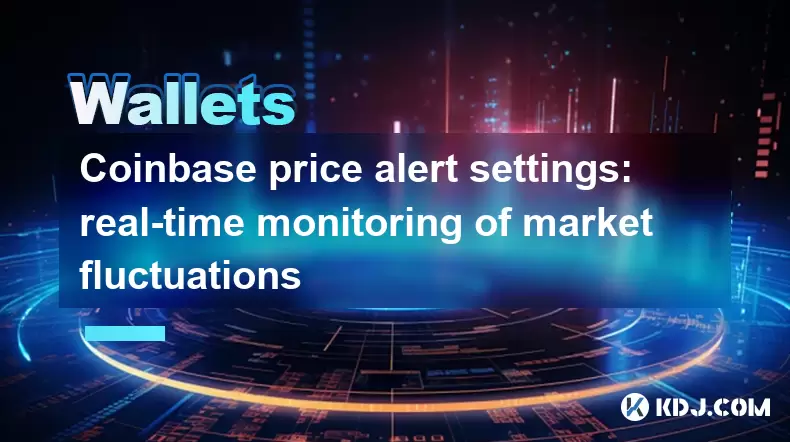
Coinbase price alert settings: real-time monitoring of market fluctuations
Jun 29,2025 at 07:00am
Setting Up Coinbase Price AlertsTo begin real-time monitoring of market fluctuations on Coinbase, users can utilize the built-in price alert feature. This function allows you to receive notifications when a cryptocurrency reaches a specific price point. To access this setting, open the Coinbase app or log in via the web platform. Navigate to the 'Prices...
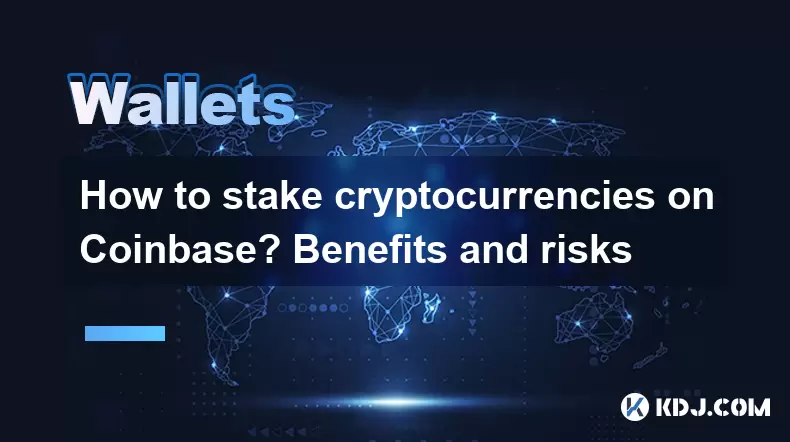
How to stake cryptocurrencies on Coinbase? Benefits and risks
Jun 27,2025 at 06:36pm
Understanding Cryptocurrency Staking on CoinbaseStaking cryptocurrencies involves locking up digital assets to support the operations of a blockchain network, typically in return for rewards. Coinbase, one of the most popular cryptocurrency exchanges globally, offers staking services for several proof-of-stake (PoS) coins. Users can stake their holdings...
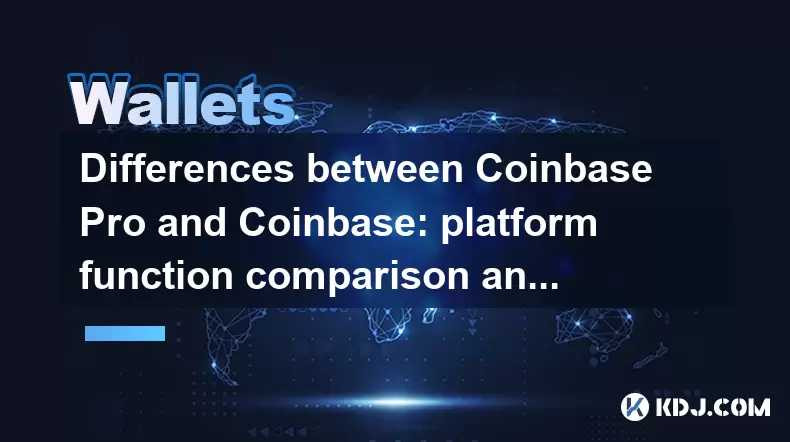
Differences between Coinbase Pro and Coinbase: platform function comparison and analysis
Jun 29,2025 at 08:21am
Overview of Coinbase and Coinbase ProWhen exploring the cryptocurrency trading landscape, users often encounter two platforms under the same parent company: Coinbase and Coinbase Pro. While both are operated by the same organization, they cater to different types of users and offer varying features. Coinbase is primarily designed for beginners and casua...
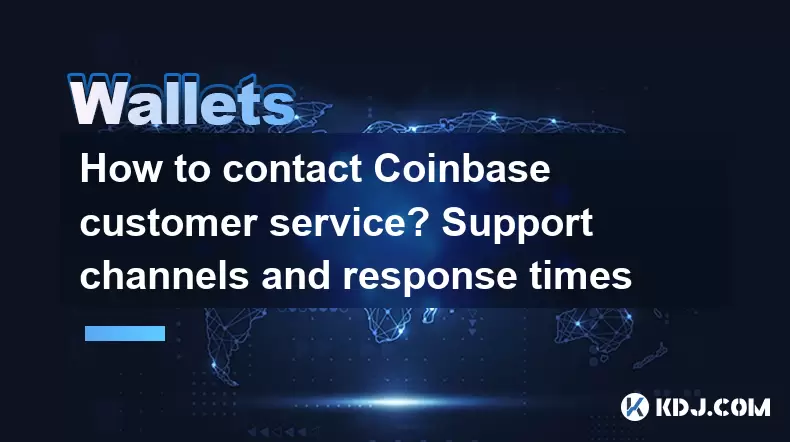
How to contact Coinbase customer service? Support channels and response times
Jun 28,2025 at 01:29pm
Contacting Coinbase Customer Service: Support Channels and Response TimesIf you're a user of Coinbase, reaching their customer service team may become necessary for various reasons, such as account verification issues, transaction disputes, or technical difficulties. Understanding the different support channels available and what to expect in terms of r...
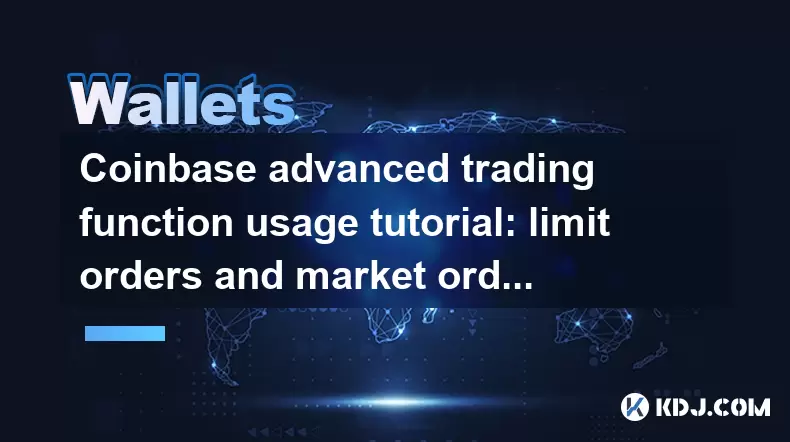
Coinbase advanced trading function usage tutorial: limit orders and market orders
Jun 28,2025 at 09:07pm
Understanding the Difference Between Limit Orders and Market OrdersWhen using Coinbase's advanced trading features, it is crucial to understand the fundamental difference between limit orders and market orders. A market order executes immediately at the best available price on the market. This type of order ensures that your trade goes through quickly, ...
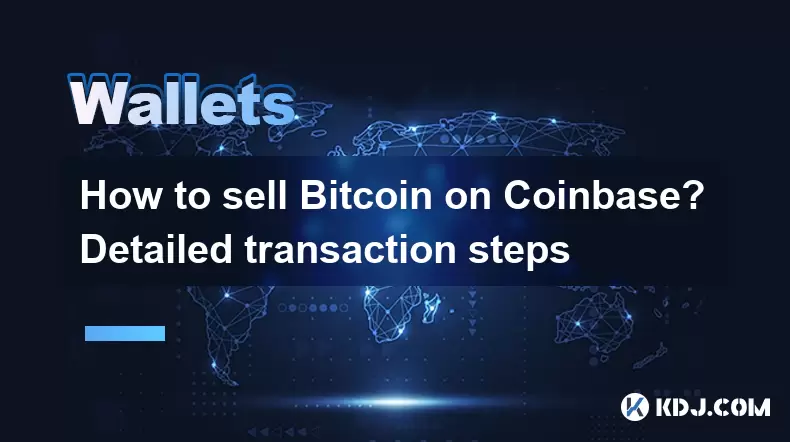
How to sell Bitcoin on Coinbase? Detailed transaction steps
Jun 29,2025 at 04:22am
Setting Up Your Coinbase Account for TransactionsBefore you can sell Bitcoin on Coinbase, you must ensure your account is fully set up and verified. Coinbase requires identity verification to comply with regulatory standards. This process involves uploading a government-issued ID, confirming your address, and sometimes submitting a selfie holding the ID...

Coinbase price alert settings: real-time monitoring of market fluctuations
Jun 29,2025 at 07:00am
Setting Up Coinbase Price AlertsTo begin real-time monitoring of market fluctuations on Coinbase, users can utilize the built-in price alert feature. This function allows you to receive notifications when a cryptocurrency reaches a specific price point. To access this setting, open the Coinbase app or log in via the web platform. Navigate to the 'Prices...

How to stake cryptocurrencies on Coinbase? Benefits and risks
Jun 27,2025 at 06:36pm
Understanding Cryptocurrency Staking on CoinbaseStaking cryptocurrencies involves locking up digital assets to support the operations of a blockchain network, typically in return for rewards. Coinbase, one of the most popular cryptocurrency exchanges globally, offers staking services for several proof-of-stake (PoS) coins. Users can stake their holdings...

Differences between Coinbase Pro and Coinbase: platform function comparison and analysis
Jun 29,2025 at 08:21am
Overview of Coinbase and Coinbase ProWhen exploring the cryptocurrency trading landscape, users often encounter two platforms under the same parent company: Coinbase and Coinbase Pro. While both are operated by the same organization, they cater to different types of users and offer varying features. Coinbase is primarily designed for beginners and casua...

How to contact Coinbase customer service? Support channels and response times
Jun 28,2025 at 01:29pm
Contacting Coinbase Customer Service: Support Channels and Response TimesIf you're a user of Coinbase, reaching their customer service team may become necessary for various reasons, such as account verification issues, transaction disputes, or technical difficulties. Understanding the different support channels available and what to expect in terms of r...

Coinbase advanced trading function usage tutorial: limit orders and market orders
Jun 28,2025 at 09:07pm
Understanding the Difference Between Limit Orders and Market OrdersWhen using Coinbase's advanced trading features, it is crucial to understand the fundamental difference between limit orders and market orders. A market order executes immediately at the best available price on the market. This type of order ensures that your trade goes through quickly, ...

How to sell Bitcoin on Coinbase? Detailed transaction steps
Jun 29,2025 at 04:22am
Setting Up Your Coinbase Account for TransactionsBefore you can sell Bitcoin on Coinbase, you must ensure your account is fully set up and verified. Coinbase requires identity verification to comply with regulatory standards. This process involves uploading a government-issued ID, confirming your address, and sometimes submitting a selfie holding the ID...
See all articles





















